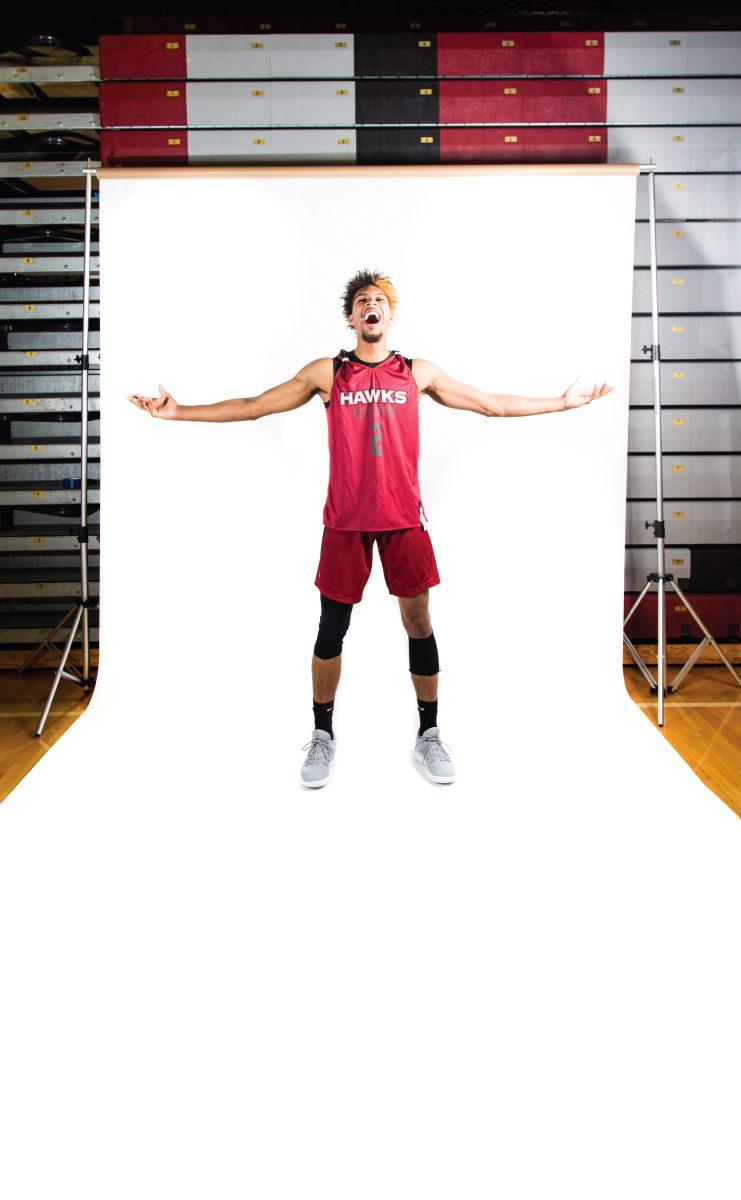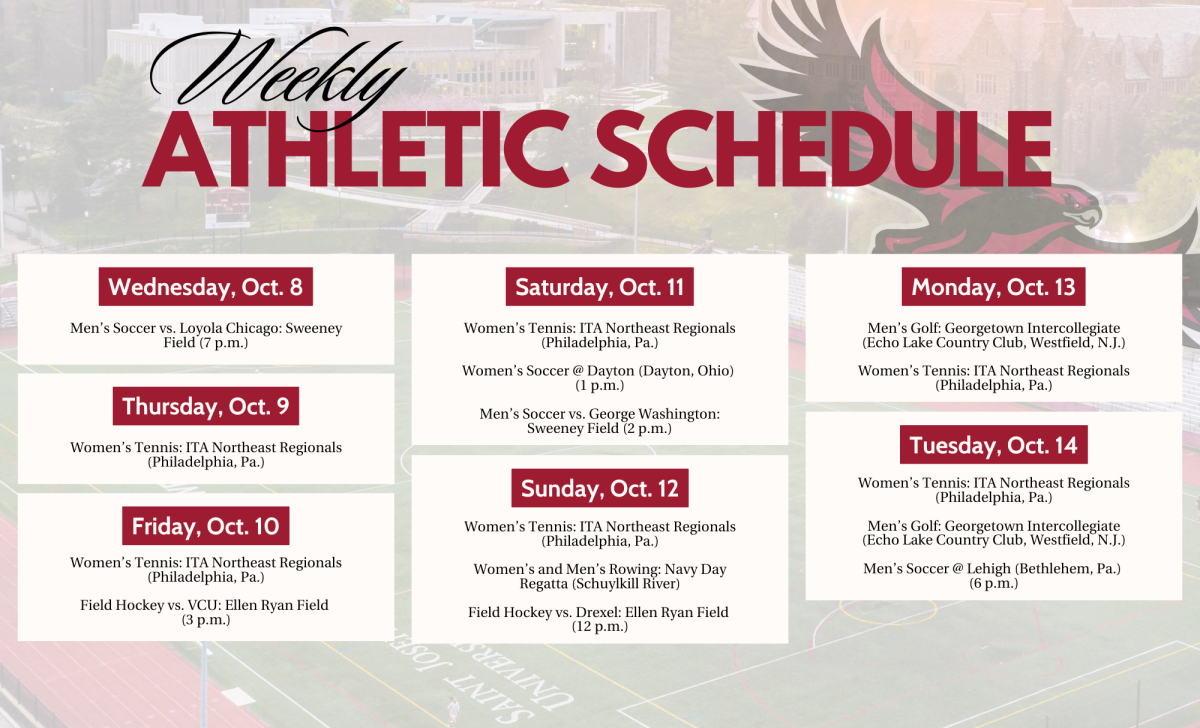Charlie Brown Jr.’s season came to an end before he got the chance to play his first game of the 2017 season.
The St. Joe’s men’s basketball redshirt sophomore injured himself in what turned out to be a season-ending fastbreak play during 5-on-5 drills on Oct. 18, 2017.
As he dribbled down the court, Brown saw former Hawk forward Jai Williams ’18 out of the corner of his eye.
“I thought to myself, ‘Should I dunk on him?’,” Brown said. “I jumped, [he] knocked me off balance and I came down the wrong way.”
Brown didn’t initially think much of the injury.
“I honestly thought it was a sprain, nothing more than that,” Brown said. “I was told a couple hours later that I had a fractured bone in my [left] wrist.”
The following week, on Oct. 24, 2017, he had surgery to repair that fracture, which was in his left scaphoid bone, a bone that is notorious for slow-healing, according to Head Athletic Trainer Bill Lukasiewicz. It was stated in an Oct. 25 SJU Athletics press release that Brown was only supposed to be sidelined for “a few weeks.”
Lukasiewicz said Brown’s injury timetable may have been incorrectly stated in the press release.
“The timetable was more like three months if things went perfectly well,” Lukasiewicz said.
Brown wasn’t initially aware the injury would last longer than “a couple of weeks.”
“The timetable just kept building [after those two weeks],” Brown said. “I didn’t know what to expect.”
After a few doctor’s appointments in Philadelphia, he decided to get a second opinion in New York. There, Brown said he got a different prognosis.
“[The second doctor] told me that after the bone was 50 percent healed, I could play,” Brown said. “They didn’t tell me that in Philly.”
Intertwined with the conflicting timetables, Brown brought multiple setbacks upon himself. He didn’t return the entire 17-18 season, something that was never predicted initially.
“He was a lousy patient,” said Phil Martelli, men’s basketball Head Coach. “He was coming into [Hagan] at night shooting when he wasn’t supposed to. There were certainly setbacks because he was doing way too much.”
Lukasiewicz said it was difficult to tame Brown’s competitive personality.
“The most challenging thing was getting him to back off, trying to put the reins on him,” Lukasiewicz said.
Brown confirmed that he disregarded parts of the recovery process, saying he wasn’t allowed to shoot but did anyway.
“I still got my workouts in and all that, for my sake,” Brown said. “I didn’t want to lose anything. I would form shoot. I would catch and shoot with my right hand, but not my left.”
Simply not catching the ball with his left hand wasn’t enough to avoid setbacks. Lukasiewicz said movement was all it took.
“I told him that he had to rest, but movement ended up slowing things down,” Lukasiewicz said.
Martelli said he had different targets in mind for Brown’s return. However, he wasn’t heavily involved in conversations with the doctors, Brown and Brown’s family.
Lukasiewicz said that after the original three month time period, he knew Brown wasn’t coming back for the rest of the season.
“When he got a CAT scan 12 weeks after the injury.” Lukasiewicz said. “It showed that the healing wasn’t where we needed it to be.”
After Brown knew he wasn’t coming back, Martelli and fellow players noticed Brown strongly embracing a positive leadership role on the team. However, Brown said the initial recovery stage was rock bottom.
“It was just that I couldn’t play anymore,” Brown said. “I couldn’t compete with my teammates like I wanted to. I missed everything about basketball. I was always thinking what’s next for me.”
Martelli said it was impossible to keep him in good spirits.
“He was a young kid who had basketball taken away from him,” Martelli said. “Basketball is how he identified himself. It was not easy for any of us and it was something that we were attuned to.”
Brown said he had teammates constantly in his corner supporting him through the entire process, namely redshirt junior guard Lamarr Kimble. Kimble was a player who could especially sympathize with Brown, as he also went down in 2017 with a season-ending injury.
“I tried to put into his mindset that just because you’re injured now, it’s not over,” Kimble said. “We’re gonna be back and be even better than before.”
Despite experiencing a tumultuous recovery, Martelli said it enhanced Brown’s love for the game.
“The beauty and character of the person never changed,” Martelli said. “I don’t know about resilience, I don’t want it to sound The Charge of the Light Brigade, but he’s in a beautiful place mentally, physically and emotionally.”















































